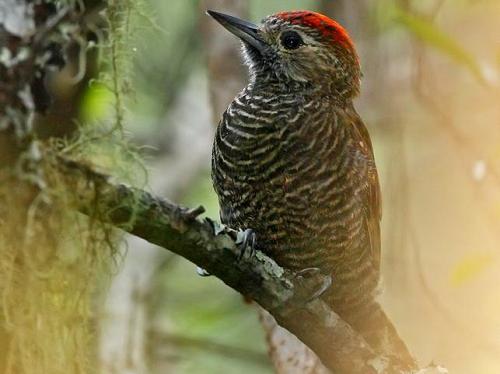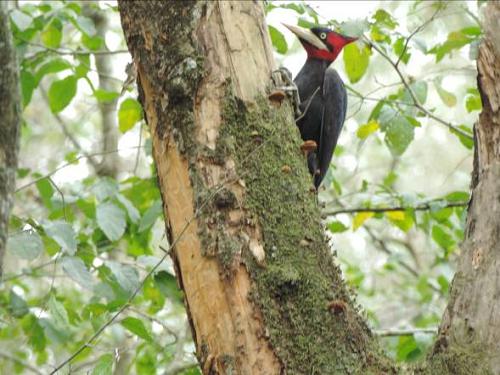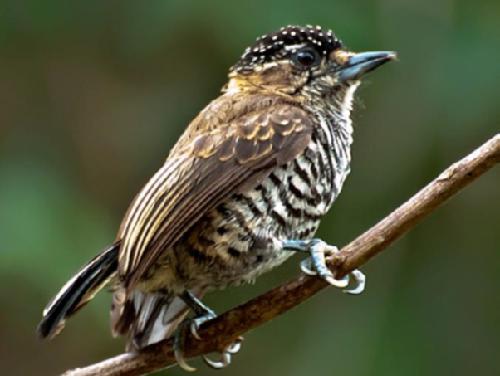Alejandro Alberto Schaaf
Other projects
19 Jan 2017
The Impact of Logging on Bird Communities: Recommendations for Sustainable Forest Management in Northwestern Argentina
27 Feb 2020
Conversion of the North-Western Argentina Forest into Exotic Eucalyptus Tree Plantations: Effects on Bird Communities
20 Jan 2022
Effects of Forest Exotic Plantation on Mammals in a Northwestern Argentina Forest: Implications for Management
The objective is to understand how cavity nesting bird species respond to habitat changes due to conventional logging in the Southern Yungas forests.

Veniliornis frontalis ©Pablo Eguia.
Tree cavities play a critical role in the life history of cavity-using species, and thus are an important structural feature of forests. However, some common forest management practices can have a profound negative effect on cavity quantity and quality, and attention is needed to maintain cavity trees in harvested stands.

Campephilus leucopogon - Cream-backed Woodpecker.
Approximately 90% of the piedmont forest in Argentine has already been transformed to other land uses and less than 1% is under protection. Many bird species use tree cavities as dens and roosts because cavities offer shelter from weather and security from predators. Cavity nesters may be particularly sensitive to timber harvesting, especially secondary cavity nesters; i.e., species that use cavities created by primary cavity nesters (such as woodpeckers) or by wood decay following damage to a tree. There is little information concerning the ecology of most subtropical forests and virtually no information on the features important for cavity nesters. We focused on cavity-nesting birds because these species are often limited by the density of suitable nest sites and they appear to be particularly sensitive to logging due to nesting sites loss. Moreover, their status may be indicative of the welfare of a large suite of species that depend on older, often dead or dying trees; and they are relatively easy to study. Therefore, understanding the effects of logging on cavity-nesting birds is a straightforward and significant step toward understanding the effects of logging on the ecosystem integrity. To assess new logging practices aimed at reducing negative effects on cavity-nesting birds, we first need information about the tree features which make it suitable for excavation by woodpeckers or a cavity suitable for occupation by secondary cavity-nesters, and which trees are likely to contain cavities. Nest survival, a key component of avian fitness, influences population viability and community structure and can vary dramatically among nest sites.

Picumnus cirratus.
This study will provide information about forest structure, abundance of cavities and densities of hole-nesting birds in different types of subtropical forests in in northwestern Argentina, and to investigate the utilization of trees and holes by all hole-nesting birds. This information will essential since with the information gathered we will be able to delineate forest management guidelines to ensure the conservation of this group and probably other components of biodiversity in the Southern Yungas forests.